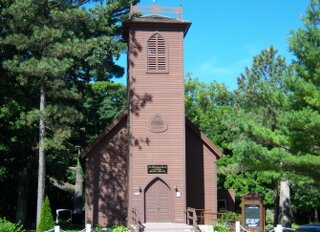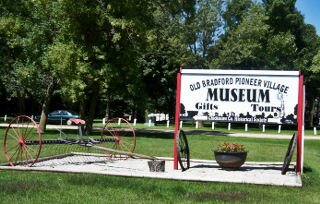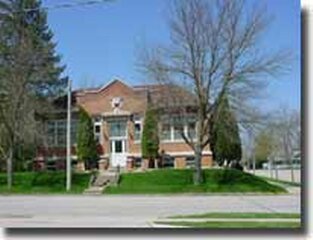|
Nashua is home to some interesting historical spots, one in particular is quite famous, others will give you some insight into what it was like living during the early years when Nashua was actually two towns: Nashua and Bradford. The other, a valued gift to the community from an historic benefactor. All in all Nashua, and the surrounding area has a wealth of historic places to visit.
Little Brown Church in the Vale 2730 Cheyenne Ave. Nashua, IA 50568
www.littlebrownchurch.org
Located just three miles from the Avenue of the Saints (hwy 27/218), The Little Brown Church was made famous by the song, "The Little Brown Church in Vale" or as it was originally written, "The Church in the Wildwood", by William Pitt, a music teacher who was passing through town on the stagecoach. He had seen this wooded spot while walking down the street and it inspired him. Interestingly enough, at the time of writing the church didn't physically exist. There was, at that time an established Puritan-Congregational Church that had formed and they were meeting in various places around the town of Bradford. (see the "History" page for more information on Bradford) They soon made plans to build a church. Providentially, the very lot where William Pitt had envisioned a church was donated by the family that owned it and soon a church building stood in the exact spot. At the time the cheapest paint they could purchase was Ohio Mineral Paint, great wood protector but...brown. The bell was hung and the church completed in 1864.
Pitt was hired as a music teacher for the Bradford Academy. He had simply tucked away the song away and forgotten about it. When he arrived back in Bradford, there, in the very spot he had romanced about, stood a little brown church. The interesting thing is that the congregation had no idea that Pitt had penned the song and that the church in his song was, indeed, brown. Pitt dug out the song and taught it to his class who sang it at the church dedication.
Each year, this little country church is sought out by people from all over the world to exchange their vows in. To date, over 70,000 marriages have been performed there. Services are held regularly and the church hosts a lively, warm congregation. For further history and information on the Little Brown Church in the Vale, visit the official website at www.littlebrownchurch.org .
The church is nestled amongst the pine trees and there are ample grounds for wedding receptions and reunions. It boasts a small but beautiful prayer garden on the grounds behind the church.  Visiting the Little Brown Church is a pleasent and a memorable one. It is an enduring icon of faith and history here. Visiting the Little Brown Church is a pleasent and a memorable one. It is an enduring icon of faith and history here.
Pastor: James Clifford Mann
email: info@littlebrownchurch.org
Sunday Worship Service 10:30 a.m. with sing-a-long at 10:15 a.m.
Everyone Welcome!
|


